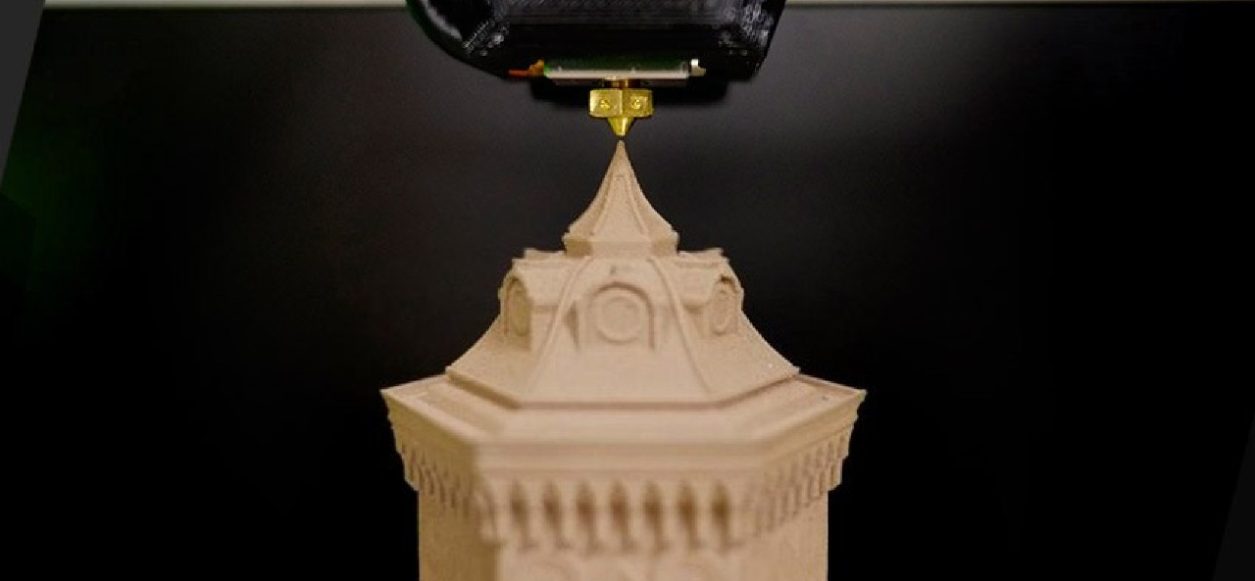
Volumic offers several types of nozzles for its printers, for different uses and applications.
These nozzles can be mounted/dismounted from a print head, but this must be considered as a maintenance operation, to be carried out following the exact methodology, otherwise performance, precision and reliability will be lost.
A simpler, more comfortable solution is to opt for several interchangeable heads with different nozzles. Visit heads like nozzles in our store.
Here are the main types of nozzles available and their characteristics/differences:
Brass nozzle :
Fitted as standard on STREAM PRO and DUAL, this is a very good compromise for classic needs. Brass has good thermal characteristics and will produce high-quality prints at low temperatures. As brass is low-cost and "soft", nozzles of this type are easy to machine and therefore inexpensive, but they wear out relatively quickly when used with even very slightly abrasive materials. When used only with non-abrasive materials (e.g. PLA, PETG...), a brass nozzle will generally have a service life of several months. On the other hand, when used with fiber-filled materials, it may become unusable in less than a kilo of printed material.
+ Thermal performance
+ Price
- Resistance
The Copper/Nickel nozzle: The Nickel-plated Copper nozzle is the "Performance" nozzle. Copper has very good thermal characteristics, so it gives very good prints at low temperatures, and can withstand higher material flows. Its hard Nickel coating also gives it greater resistance and therefore a much longer service life. Its increased resistance can also withstand occasional printing of lightly charged materials.
+++ Thermal performance
++ Resistance
- Price
The stainless steel nozzle: The stainless steel nozzle can be used for regular (but not continuous) printing of abrasive materials, but is especially recommended for printing "standardized" materials and objects, e.g. for food, medical applications etc., which will require this type of material to have a minimum of "contamination". On the other hand, the materials used for stainless steel, such as steel, have much poorer thermal performance than copper or brass, so you'll need to print at higher temperatures to achieve the same results. Printing with a stainless steel nozzle whose layers delaminate more easily than normal means that the printing temperature is too low. The delta generally observed is around 10 to 15° higher than with a brass nozzle.
++ Resistance
++ Use in health/normative sectors
- Thermal performance
The hardened steel nozzle: The hardest of all, for continuous printing of filled and abrasive materials. Excellent resistance, but even poorer thermal performance than stainless steel, requiring higher printing temperatures, generally 15° to 25° higher.
+++ Resistance
- Thermal performance
- Price
Nozzle diameters in 3D printing:
Different diameters are also available for all nozzle types, to suit every need.
However, not all materials support all diameters, especially small nozzles. It should be noted that we strongly advise against using nozzles smaller than 0.4/0.5mm in diameter for loaded materials, as the fibrous load will have a strong tendency to systematically clog the nozzle on small diameters. The 0.4mm nozzle fitted as standard is a very good compromise between quality, fineness and printing time.
Smaller nozzles will increase printing time, but will enable you to print objects with finer walls and details, i.e. the size of your nozzle defines the smallest printable point/detail. Large-diameter nozzles will speed up printing, but reduce sharp edges and printable detail. They can also significantly increase object strength.
Nozzle diameters range from 0.15mm to 1mm. Visit the Volumic website to see the different models on offer.
If you change your nozzle diameter, you'll need to modify your slicing settings in your software to match:
- For Simplify3D: open your process window, and in the "Extruder" tab (in advanced mode), modify the diameter with the "Nozzle diameter" value to match that of your mounted nozzle.
- For Repetier: Open the "Printer settings" panel with the top-right button, select the "Extruder" tab and modify the "Diameter" parameter to match that of your mounted nozzle.
Remember that with stainless steel or steel nozzles, you'll need to increase the temperature significantly to get good results, otherwise the material won't adhere to the lower layer, or your objects will be fragile and delaminate easily.
Volumic 3D
- Feb/2018 -
09/07/2025 © All rights Reserved. GEMEA Interactive
